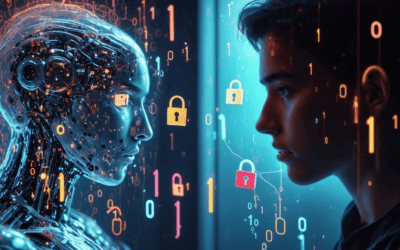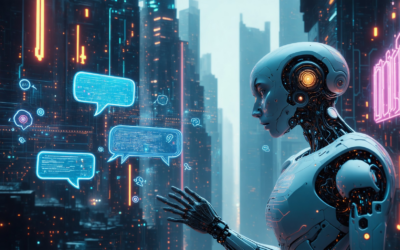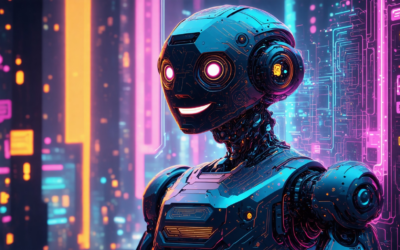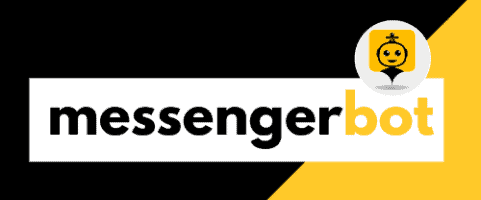In today’s fast-paced digital landscape, businesses are increasingly turning to innovative solutions to enhance customer engagement and support. One such solution is the live chat robot, a powerful tool that combines the efficiency of artificial intelligence with the immediacy of real-time communication. This article delves into the multifaceted world of live chat robots, exploring essential questions such as, Is live chat a robot? and How do you tell if a chat is a bot?. We will also examine the costs associated with implementing a live chat robot app, compare various pricing models, and discuss the advantages of utilizing free AI chat options. Furthermore, we will clarify the distinctions between AI chatbots and traditional live chat, providing insights into when to deploy each for optimal customer interaction. Join us as we uncover how a live chatbot can transform your customer service strategy and elevate user experience.
Is Live Chat a Robot?
Understanding the distinction between live chat and chatbots is essential for businesses aiming to enhance their customer support experience. While both serve critical roles, they operate differently and offer unique advantages that can significantly impact customer satisfaction and engagement.
Understanding the Concept of a Live Chat Robot
Live chat and chatbots serve distinct roles in customer support, each with unique advantages.
- Definition and Functionality:
- Live Chat: This feature facilitates real-time communication between customers and human agents. It allows for personalized interactions, where agents can demonstrate empathy and understanding, addressing complex issues that require human judgment. According to a study by the International Journal of Human-Computer Interaction, human agents can better interpret emotional cues, leading to higher customer satisfaction.
- Chatbots: These are automated systems designed to handle basic inquiries and provide instant responses. They utilize artificial intelligence (AI) to interpret user queries and deliver relevant information quickly. While chatbots can efficiently manage high volumes of simple requests, they may struggle with nuanced questions that require deeper understanding.
- Advantages of Live Chat:
- Empathy and Personalization: Human agents can adapt their responses based on the emotional state of the customer, which is crucial for building rapport and trust.
- Complex Problem Solving: Live chat is ideal for addressing intricate issues that require detailed explanations or troubleshooting, which chatbots may not handle effectively.
- Advantages of Chatbots:
- 24/7 Availability: Chatbots can provide support around the clock, ensuring that customers receive immediate assistance regardless of the time.
- Cost Efficiency: By automating responses to common queries, businesses can reduce operational costs and allocate human resources to more complex tasks.
Conclusion: While live chat is not a robot, it complements chatbot technology by providing a human touch in customer interactions. Businesses often use both in tandem to enhance the overall support experience, leveraging the strengths of each to meet diverse customer needs.
Benefits of Using a Live Chat Robot App
Implementing a live chat robot app can significantly enhance customer engagement and streamline communication. Here are some key benefits:
- Improved Response Times: Live chat apps enable businesses to respond to customer inquiries instantly, reducing wait times and improving overall satisfaction.
- Increased Customer Engagement: By providing immediate assistance, businesses can keep customers engaged and reduce the likelihood of them abandoning their inquiries.
- Data Collection and Insights: Live chat tools often come with analytics features that allow businesses to track customer interactions, helping to identify trends and improve service quality.
- Integration with Other Tools: Many live chat applications can integrate seamlessly with CRM systems and other customer service tools, enhancing operational efficiency.
For more insights on how live chat can transform customer support, explore our resources on elevating customer support and revolutionizing customer support.

How much does a live chatbot cost?
Understanding the cost of a live chatbot is essential for businesses looking to enhance their customer engagement through automated solutions. The pricing can vary significantly based on the features, functionalities, and the scale of implementation. Here’s a breakdown of what to expect when considering a live chat robot for your business.
Live Chat Pricing: What to Expect
Chatbot Pricing: How Much Does a Chatbot Cost? (2024)
- Standard Chatbot Software Plans: Typically range from $0 to $500 per month. These plans often include basic features suitable for small businesses or startups looking to enhance customer engagement without significant investment.
- Enterprise Chatbot Software Plans: Generally priced between $600 and $5,000 per month. These plans are designed for larger organizations that require advanced functionalities, such as integration with existing systems, enhanced analytics, and dedicated support.
- In-House Chatbot Development: The cost for developing a custom chatbot in-house can be substantial, averaging around $10,000 to $100,000 depending on complexity, features, and the development team’s expertise. This option provides tailored solutions but requires a significant upfront investment.
- Factors Influencing Cost:
- Features and Functionality: More advanced features like natural language processing (NLP), machine learning capabilities, and multi-channel support can increase costs.
- Customization Level: Highly customized chatbots that cater specifically to business needs will incur higher development costs.
- Maintenance and Updates: Ongoing costs for maintenance, updates, and support should also be considered in the overall budget.
- Recent Trends: The chatbot market is evolving, with many businesses opting for AI-driven solutions that can enhance user experience and reduce operational costs. According to a report by Grand View Research, the global chatbot market is expected to reach $1.34 billion by 2024, indicating a growing investment in this technology.
- Conclusion: When considering the cost of a chatbot, businesses should evaluate their specific needs, the desired level of customization, and the potential return on investment. For more detailed insights, refer to sources like Gartner and Forrester Research for comprehensive market analyses and trends.
Comparing Live Chat Prices and Features
When evaluating live chat options, it’s crucial to compare the prices and features of various platforms. Many providers offer tiered pricing models that cater to different business sizes and needs. Here are some key aspects to consider:
- Feature Set: Look for essential features such as automated responses, integration capabilities, and analytics tools. For instance, a Brain Pod AI chatbot may offer advanced functionalities that justify a higher price point.
- Scalability: Ensure that the live chat solution can grow with your business. Some platforms provide flexible plans that allow you to upgrade as your needs evolve.
- Customer Support: Evaluate the level of support offered. A robust support system can save you time and resources in the long run.
- Trial Periods: Many services offer free trials or demo versions. Take advantage of these to assess the platform’s effectiveness before committing financially.
By comparing these elements, you can make an informed decision that aligns with your business goals and budget. For more insights on enhancing customer support with chatbots, check out our article on elevating customer support with conversational AI chatbots.
Can I chat with AI for free?
Yes, you can chat with AI for free through various platforms that offer AI chatbot services. These platforms allow users to engage in conversations, ask questions, and receive instant responses without any cost. Examples include ChatGPT, Replika, and others. The accessibility of these services has made it easier for individuals and businesses to leverage artificial intelligence online chat capabilities without financial barriers.
Exploring Free AI Chat Options
When considering free AI chat options, it’s essential to understand the features and benefits they offer:
- Free AI Chat Websites: Numerous websites provide free access to AI chatbots. These platforms allow users to engage in conversations, ask questions, and receive instant responses without any cost.
- User-Friendly Interface: Most free AI chat services are designed to be intuitive and easy to navigate, ensuring that users of all ages can interact with the AI effortlessly.
- Privacy and Security: Reputable AI chat platforms prioritize user privacy and data protection. They implement robust security measures to safeguard personal information, ensuring a safe chatting experience.
- Versatile Applications: Free AI chatbots can assist with a variety of tasks, including answering questions, providing recommendations, and even offering creative inspiration. This versatility makes them valuable tools for both personal and professional use.
- Continuous Learning: Many AI chatbots utilize machine learning algorithms to improve their responses over time, providing users with increasingly accurate and relevant information.
For more information on free AI chat services, you can refer to sources like OpenAI’s official website and tech reviews from platforms such as TechCrunch and CNET, which discuss the latest advancements and options available in AI chat technology.
Advantages of Using a Free AI Chatbot
Utilizing a free AI chatbot can significantly enhance user experience and engagement. Here are some advantages:
- Cost-Effective Solution: Free AI chatbots eliminate the need for expensive customer service solutions, making them accessible for startups and small businesses.
- Instant Support: With a live chat robot, users can receive immediate responses to their inquiries, improving overall satisfaction and engagement.
- Scalability: Free AI chatbots can handle multiple conversations simultaneously, allowing businesses to scale their customer support without increasing staffing costs.
- Integration Capabilities: Many free AI chatbots can be integrated into existing platforms, enhancing functionality and streamlining communication processes.
- Enhanced Customer Insights: By analyzing interactions, businesses can gain valuable insights into customer preferences and behaviors, informing future strategies.
For those looking to explore the benefits of AI chatbots further, consider checking out our article on AI-powered customer service bots for more insights.
Is ChatGPT a Chatbot?
ChatGPT is an advanced artificial intelligence (AI) chatbot developed by OpenAI, utilizing state-of-the-art natural language processing (NLP) techniques to facilitate human-like conversational interactions. This sophisticated language model is capable of understanding context, generating coherent responses, and engaging in dialogue across a wide range of topics.
What is ChatGPT and How It Functions as a Chatbot
ChatGPT employs deep learning algorithms to comprehend and interpret user inputs, allowing for nuanced conversations that mimic human interaction. Its key features include:
- Natural Language Understanding: ChatGPT can understand and respond to user queries in a conversational manner, making it an effective tool for customer service applications.
- Content Generation: Beyond simple Q&A, ChatGPT can create diverse written content, including articles, social media posts, essays, programming code, and emails, making it a versatile tool for various applications.
- Learning from Context: The model is designed to remember previous interactions within a session, enhancing the relevance and continuity of conversations.
- Customization: Users can fine-tune the chatbot’s responses by providing specific instructions or context, enabling tailored interactions that meet individual needs.
Recent advancements in AI and NLP have positioned ChatGPT as a leading solution in the chatbot landscape, with applications in customer service, education, content creation, and more. For further reading on the capabilities and implications of AI chatbots like ChatGPT, refer to sources such as the OpenAI official website and research articles published in journals like the Journal of Artificial Intelligence Research (JAIR).
ChatGPT vs Other AI Chatbots: A Comparison
When comparing ChatGPT to other AI chatbots, several factors come into play, including functionality, user experience, and application versatility. While many chatbots focus on specific tasks, such as answering FAQs or providing customer support, ChatGPT excels in generating human-like dialogue across various contexts. This adaptability makes it a strong contender against other popular AI chatbots like those offered by Brain Pod AI, which also provide robust features for businesses looking to enhance their customer interactions.
In terms of pricing, ChatGPT and similar platforms often offer tiered plans to accommodate different business needs, making it essential to evaluate live chat pricing and features to find the best fit for your organization. Overall, the choice between ChatGPT and other AI chatbots will depend on specific requirements, including the desired level of customization and the types of interactions you wish to automate.

How Do You Tell If a Chat Is a Bot?
Identifying whether a chat participant is a bot or a human can significantly enhance your online interaction experience. Understanding the characteristics of a live chat robot can help you navigate conversations more effectively. Here are some key indicators to help you determine if you’re chatting with a bot.
Identifying Bot Chat Features
To determine if a chat participant is a bot or a human, consider the following indicators:
- Response Patterns: Bots often exhibit rapid response times, typically replying almost instantaneously or at consistent intervals. In contrast, human responses may vary in speed due to thought processing and typing time. Look for repetitive phrases or scripted responses, which are common in bot interactions.
- Understanding Context and Subtext: Bots struggle with nuances such as sarcasm, humor, or emotional tone. Test the participant by using subtle sarcasm or complex questions that require contextual understanding. A bot may provide a literal or irrelevant answer.
- Complexity of Questions: Pose open-ended questions that require elaboration. Bots usually provide short, generic responses, while humans are more likely to give detailed, personalized answers.
- Engagement and Adaptability: Observe how the participant adapts to the conversation. Bots may fail to follow the flow of a discussion or change topics abruptly without context.
- Error Patterns: Pay attention to grammatical errors or awkward phrasing. While bots can generate text, they may produce sentences that lack natural flow or contain unusual syntax.
- Use of Emojis and Slang: Bots may not effectively use emojis or current slang, which can be a telltale sign of their artificial nature. Human users often incorporate these elements fluidly into their conversations.
- Verification Tools: Utilize tools designed to detect bot activity, such as CAPTCHA tests or bot detection software, which analyze user behavior and interaction patterns.
By applying these strategies, you can more effectively discern whether you are interacting with a bot or a human, enhancing your understanding of online communication dynamics. For further reading on this topic, refer to the research conducted by the MIT Media Lab on human-bot interaction and the insights from the Journal of Artificial Intelligence Research on conversational agents.
Differences Between Live Chat and Bot Chat
Understanding the differences between live chat and bot chat is crucial for effective communication. Here are some key distinctions:
- Human Interaction: Live chat involves real human agents who can provide personalized responses and understand complex queries. In contrast, a live chat robot relies on pre-programmed responses and may struggle with nuanced questions.
- Response Time: Bots can respond instantly, making them efficient for handling simple inquiries. However, they may lack the depth of understanding that a human agent can provide, especially for complicated issues.
- Emotional Intelligence: Human agents can empathize and adapt their responses based on the emotional tone of the conversation, while bots may not recognize emotional cues effectively.
- Availability: Bots are available 24/7, making them ideal for handling inquiries outside of business hours. Live agents, however, may have limited availability depending on the company’s operating hours.
By recognizing these differences, you can choose the appropriate chat option for your needs, whether it’s a live chat with a bot or a human agent. For more insights on enhancing customer support with AI, explore our article on elevating customer support with conversational AI chatbots.
Is Live Chat with a Real Person?
Live chat with a real person is a service that allows customers to communicate directly with a human agent in real time, providing immediate assistance and personalized support. Unlike chatbots, which can handle basic inquiries and automate responses without human involvement, live chat ensures that a qualified representative is available to address more complex questions and concerns.
Understanding Live Chat Functionality
Live chat functionality is designed to enhance customer interaction by providing a seamless communication channel between businesses and their clients. This service typically operates through a chat window on a website or within an application for chat, allowing users to engage with support agents instantly. Key features of live chat with a real person include:
- Real-Time Interaction: Customers can receive instant responses, enhancing their experience and satisfaction.
- Personalized Support: Human agents can understand nuances in customer queries, providing tailored solutions that chatbots may not be able to offer.
- Complex Problem Solving: Live agents are equipped to handle intricate issues that require critical thinking and empathy, which chatbots often lack.
- Higher Customer Satisfaction: Studies show that customers prefer speaking with a human for significant issues, leading to improved loyalty and retention (Source: Zendesk).
Live Chat vs Chatbots: When to Use Each
In 2024, businesses are increasingly recognizing the value of integrating live chat into their customer service strategies, as it not only improves customer engagement but also boosts conversion rates. According to a report by HubSpot, 73% of customers say that live chat is the most satisfying way to communicate with a business.
While chatbots, such as those powered by Brain Pod AI, are excellent for handling routine inquiries and providing 24/7 support, live chat is essential for addressing more complex issues that require human insight. Therefore, businesses should consider a hybrid approach, utilizing both live chat and AI chat online to maximize efficiency and customer satisfaction.
In conclusion, live chat with a real person offers a distinct advantage over automated systems, ensuring that customers receive the support they need in a timely and effective manner. For more insights on how to enhance customer support with chatbots, check out our article on elevating customer support with conversational AI chatbots.
How does live chat work?
Live chat functions as a real-time communication tool that allows businesses to engage with customers directly through their websites or applications. By integrating a live chat feature, companies can provide immediate assistance, answer inquiries, and enhance customer satisfaction. The technology behind live chat typically involves a combination of human agents and automated systems, such as a live chat robot or chatbot, which can handle routine questions and tasks, freeing up human agents for more complex issues.
The Technology Behind Live Chat Online
The backbone of live chat technology includes various components such as web-based chat applications, customer relationship management (CRM) systems, and artificial intelligence (AI) algorithms. These elements work together to facilitate seamless communication. For instance, an artificial intelligence online chat can analyze customer queries and provide instant responses, while human agents can step in when the conversation requires a personal touch. This hybrid approach not only improves response times but also enhances the overall customer experience.
Live Chat Software Pricing and Features
When considering live chat pricing, businesses should evaluate the features offered by different platforms. Common features include automated responses, chat history, and integration with other tools like CRM systems. Pricing can vary significantly based on the level of service, with options ranging from free basic plans to premium packages that offer advanced functionalities. For example, platforms like Brain Pod AI provide competitive pricing for their AI chatbot services, which can be a cost-effective solution for businesses looking to enhance their customer support capabilities.





